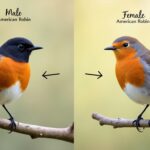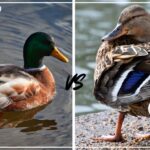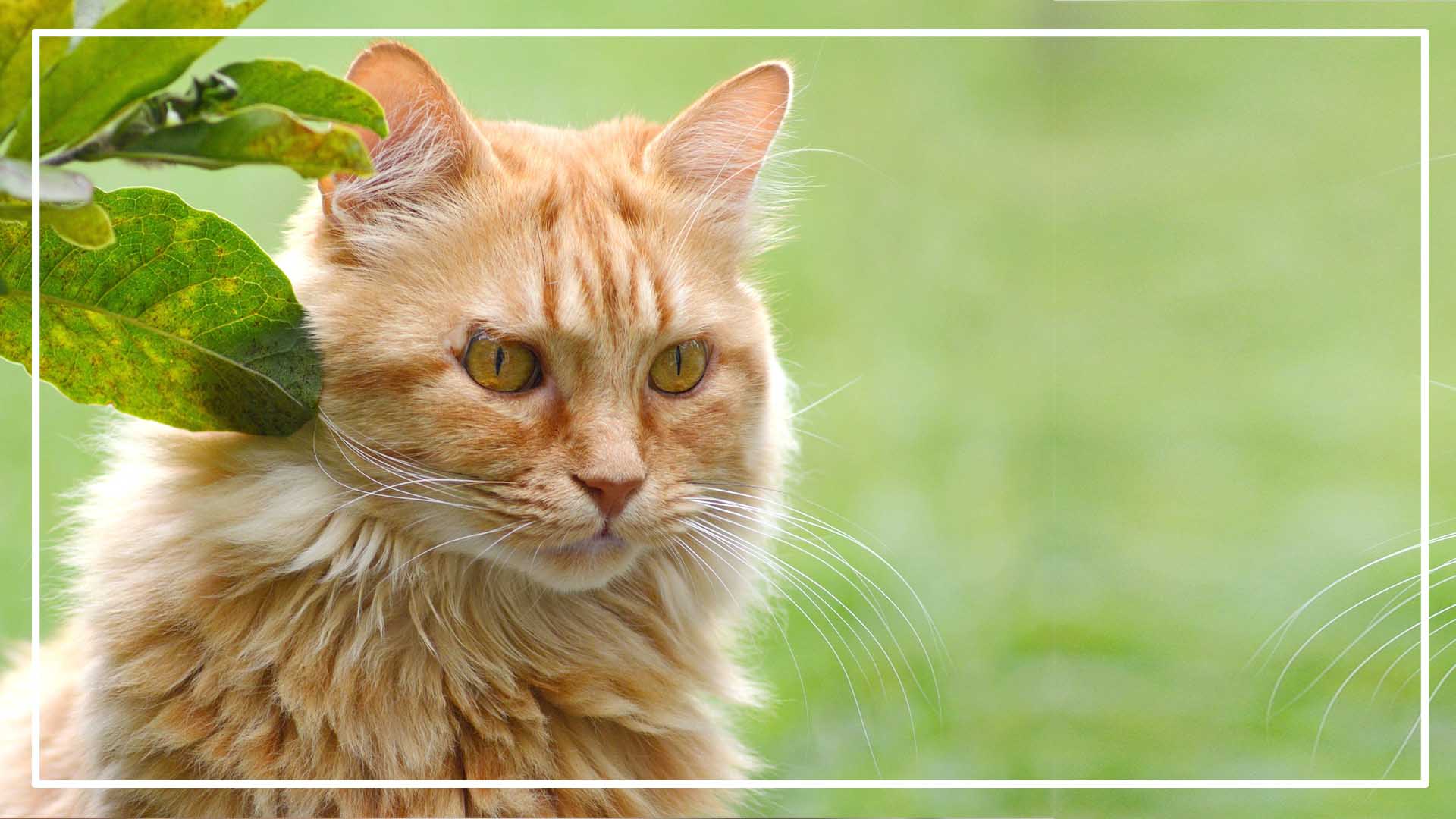Orange tabby cats come in a delightful range of coat patterns and shades, each with its own charm and character. From bold swirls to soft stripes and unique patchwork, these cats aren’t just beautiful—they’re full of personality. In this guide, you’ll discover the seven main types of orange tabby cats, their distinct appearances, and the behaviors that make them so beloved by cat lovers everywhere.
1. Classic Orange Tabby
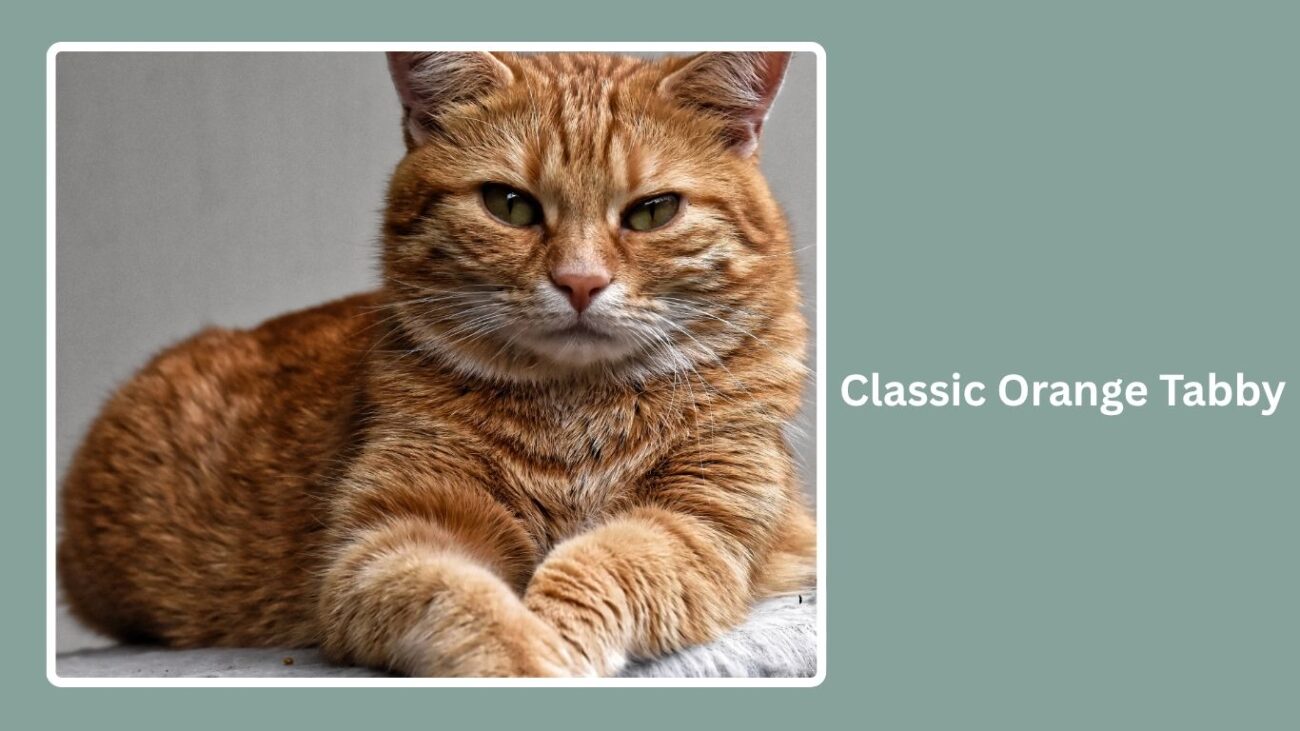
The Classic Orange Tabby is admired for its bold, swirling coat patterns and warm, rich colors. Often referred to as the “blotched tabby,” this cat stands out with its dramatic marbled look, combining both beauty and personality. It’s one of the most popular tabby variations due to its charming appearance and lovable nature.
Appearance and Color Pattern
The most defining feature of a Classic Orange Tabby is its coat. The pattern consists of large, curved swirls that spread across the body, often forming a circular “bullseye” shape on the sides. The background color is usually a lighter orange or cream, while the markings appear in a deeper, more vibrant orange or reddish tone.
These cats typically have:
- A bold “M” shaped marking on the forehead
- A lighter muzzle and chin area
- Strong, thick stripes that form a marbled appearance
- Ringed legs and tail, consistent with tabby characteristics
Eye color often ranges from gold and copper to green, complementing their warm fur tones beautifully.
Personality and Behavior
Classic Orange Tabbies are known for being social and people-oriented. They often follow their owners from room to room, enjoying attention and interaction. These cats are playful and intelligent, making them quick learners and responsive to routines.
They are typically:
- Affectionate with both people and other pets
- Confident and curious
- Adaptable to new environments
- Vocal when they want something
This temperament makes them ideal companions in households with children, other cats, or even dogs.
Coat Texture and Size
The coat of a Classic Orange Tabby may be short or medium in length depending on its breed lineage, but it’s generally soft and dense. Their build can vary, but many tend to have muscular, medium-sized bodies with broad faces and expressive eyes. Their thick tails and rounded paws add to their cuddly, approachable look.
2. Mackerel Orange Tabby
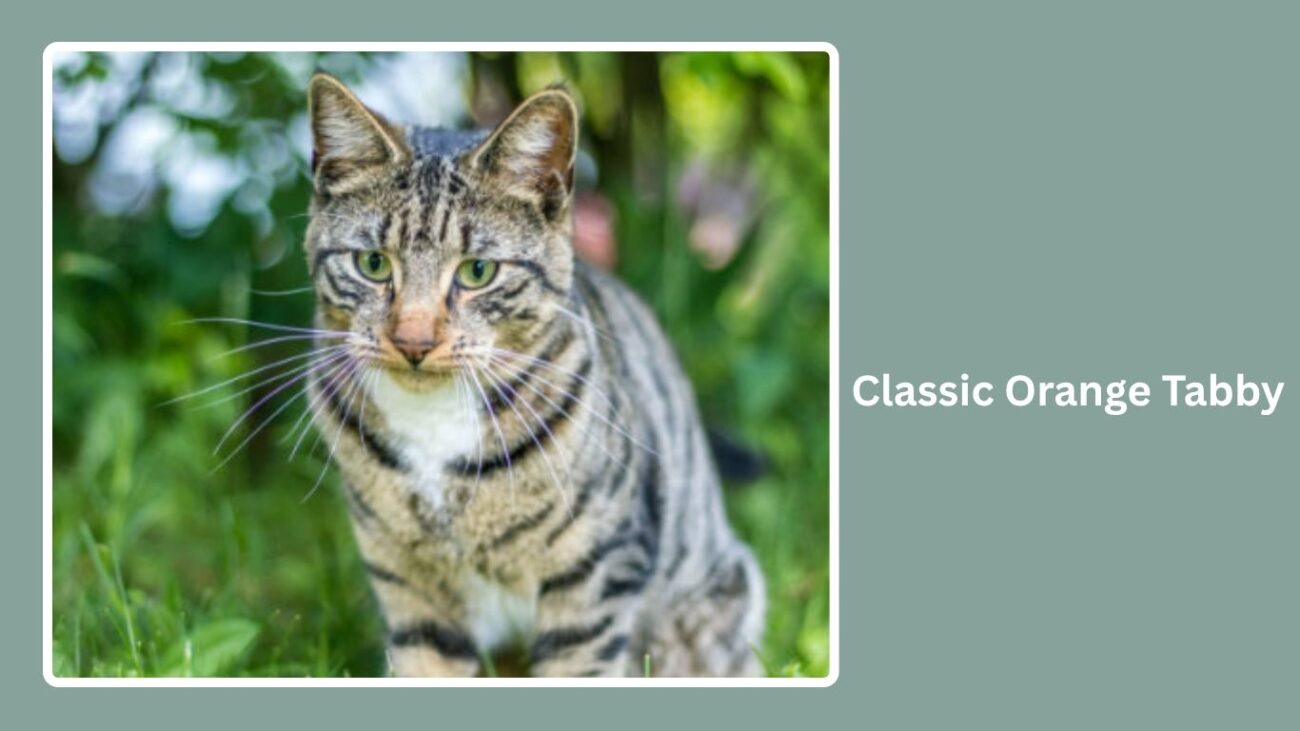
The Mackerel Orange Tabby is the most common tabby pattern and easily recognized by its narrow, tiger-like stripes. Often called the “tiger cat,” this pattern gives the feline a sleek and wild appearance while retaining a gentle and playful personality.
Appearance and Color Pattern
Mackerel Orange Tabbies have thin, vertical stripes that run parallel along their sides, often resembling fish bones—hence the name “mackerel.” These stripes are evenly spaced and more linear compared to the bold swirls of the classic tabby.
You’ll typically see:
- One long stripe running down the spine
- Narrow, evenly spaced stripes that curve slightly around the torso
- A lighter orange or cream undercoat with darker orange or ginger striping
- Distinct facial markings, including an “M” shape on the forehead and lines extending from the eyes
Their coat gives them an athletic, agile look, often highlighted by a leaner body type.
Personality and Behavior
Mackerel Orange Tabbies tend to be energetic, playful, and alert. They are curious explorers, often investigating every corner of the house and climbing to high places. These cats enjoy interactive play and can form strong bonds with their owners.
Many cat owners describe them as:
- Highly active and intelligent
- Loyal but independent
- Friendly with children and other pets
- Engaged in playful behavior even as they grow older
Their high energy levels make them ideal for active households where they’ll have space and stimulation.
Coat Texture and Size
The coat of a Mackerel Orange Tabby is usually short, smooth, and low-maintenance. These cats often have a medium build with an athletic structure—long legs and a slim tail that’s also striped.
Unique Traits
No two mackerel tabbies have the exact same striping pattern. Some might have broken or split stripes, and a few may show small spots where stripes should be. Despite their wild look, these cats are among the most affectionate and social of all tabby types.
3. Spotted Orange Tabby

The Spotted Orange Tabby stands out with its dotted coat pattern, which gives it a rare and exotic flair. These cats often look like miniature wild cats, such as ocelots or cheetahs, but are entirely domestic and loving in nature.
Appearance and Color Pattern
Instead of stripes or swirls, Spotted Orange Tabbies have spots scattered across their bodies. The spots can be small and round or large and oval-shaped, depending on genetics. Though they may still have faint tabby features on the face and legs, the spots dominate the body.
These features are typical:
- Rich orange or ginger base color with darker orange or reddish spots
- Spot shapes that vary in size and placement
- Ringed tail and faint leg striping
- Signature “M” on the forehead
Sometimes, spots appear in horizontal rows or broken stripes that resemble spots.
Personality and Behavior
Spotted Orange Tabbies are playful, adventurous, and often a bit mischievous. They tend to be confident and enjoy interactive games, puzzles, and toys that stimulate their minds. They’re also known for being affectionate lap cats once they’ve had their playtime.
Their behavior often includes:
- Curiosity-driven exploration
- Affection for human companionship
- High levels of energy and enthusiasm
- Tendency to “talk” with chirps or meows
These cats enjoy attention and make loyal, entertaining companions.
Coat Texture and Size
Spotted Orange Tabbies usually have a smooth, glossy coat that feels silky to the touch. Their body types vary but often lean toward lean and muscular, especially in breeds like the Bengal or Ocicat where this pattern is common.
Unique Traits
The spotted pattern is genetically a variation of the mackerel stripe, broken into pieces to form dots. While not as common as other tabby types, spotted orange tabbies are highly sought after for their unusual and striking appearance.
4. Ticked Orange Tabby

The Ticked Orange Tabby features a unique coat pattern that may not immediately appear tabby-like at first glance. Instead of visible stripes or spots, the ticked tabby has individual hairs banded with multiple colors, giving the coat a shimmering, sand-like appearance. This subtle elegance makes it one of the most visually intriguing tabby variations.
Appearance and Color Pattern
Ticked Orange Tabbies have a coat that looks uniformly colored from a distance. However, up close, each hair is actually striped in bands of orange and lighter cream or buff shades. This gives the fur a glowing, almost iridescent effect that changes slightly in different lighting.
Key visual traits include:
- Minimal or no striping on the body
- Distinct tabby facial markings (like the “M” on the forehead and eye lines)
- Faint striping may appear on legs and tail
- An overall rich orange or amber glow across the body
This pattern is commonly seen in breeds like the Abyssinian or Somali.
Personality and Behavior
Ticked Orange Tabbies are often active, clever, and interactive with their surroundings. They’re fast learners and enjoy mental stimulation through toys, games, or even training sessions. These cats bond closely with their human families and enjoy companionship without being overly clingy.
Common behavioral traits include:
- Alertness and curiosity
- Affectionate, but with a strong independent streak
- High energy with graceful movement
- Intelligent and responsive to voice or commands
They often form tight bonds with one or two favorite people in the household.
Coat Texture and Size
The ticked coat is fine, dense, and soft to the touch. Most ticked tabbies are medium-sized with elegant builds, especially in breeds where this pattern is standard. Their coats don’t tangle easily, but their fast pace and frequent activity might need regular grooming attention.
Unique Traits
What makes the ticked pattern exceptional is that it’s not immediately obvious it’s a tabby at all. The tabby identity is revealed only upon close inspection. This “hidden tabby” effect makes these cats especially admired by those who enjoy subtle, refined markings.
5. Patched Orange Tabby (Torbie)
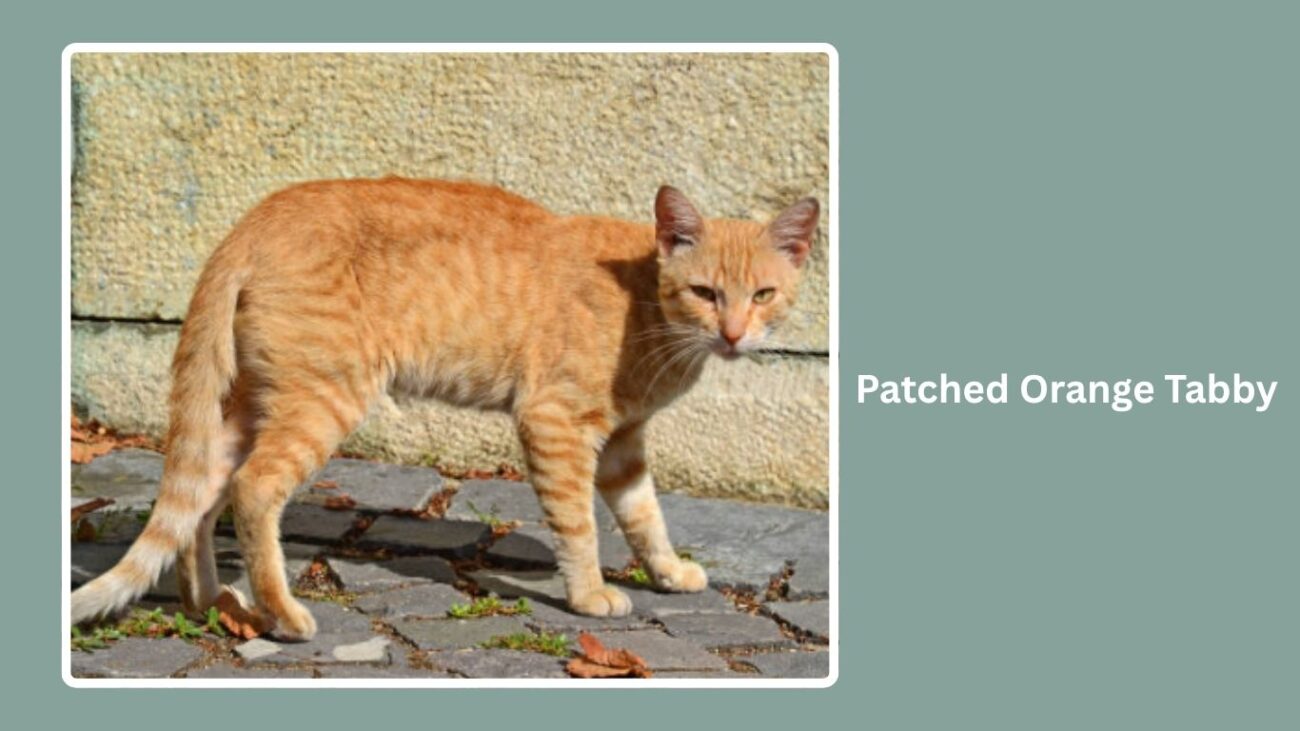
The Patched Orange Tabby, often referred to as a Torbie, is a beautiful blend of tabby stripes and tortoiseshell coloring. This pattern features patches of orange tabby mixed with black or gray tabby, resulting in a stunning multicolored cat. These cats are almost always female due to the genetics involved in their coloring.
Appearance and Color Pattern
A Patched Orange Tabby doesn’t have a uniform orange look—instead, its coat is a mix of orange tabby patches and darker shades like black, brown, or gray. Each patch typically maintains tabby striping within it, creating a complex and beautiful pattern across the cat’s body.
Typical visual features include:
- A mix of orange and darker tabby stripes
- Asymmetrical patches with clear tabby patterns
- Bright orange segments often on the face, legs, or back
- Unique coat layout in every individual—no two Torbies look alike
These cats often appear “painted,” with bold colors set in a random mosaic.
Personality and Behavior
Patched Orange Tabbies are known for strong, lively personalities. They can be playful, bold, and highly expressive. While affectionate, they’re often described as having a “spicy” or sassy attitude—independent but loving on their own terms.
Their behavior is usually:
- Energetic and fearless
- Strong-willed and confident
- Very affectionate when comfortable
- Playful and easily bored if not mentally stimulated
These cats love variety in their environment and often have big opinions on what they like.
Coat Texture and Size
The coat texture can vary widely depending on breed—ranging from short and dense to medium and fluffy. Most Torbies are medium-sized and well-built, with striking eyes that often reflect the mix of colors in their fur.
Unique Traits
Nearly all Patched Orange Tabbies are female because the gene responsible for both orange and black coloring is carried on the X chromosome. Male Torbies are extremely rare and often sterile. Their multicolor patchwork is often seen as a symbol of uniqueness and personality.
6. Orange Tabby with White
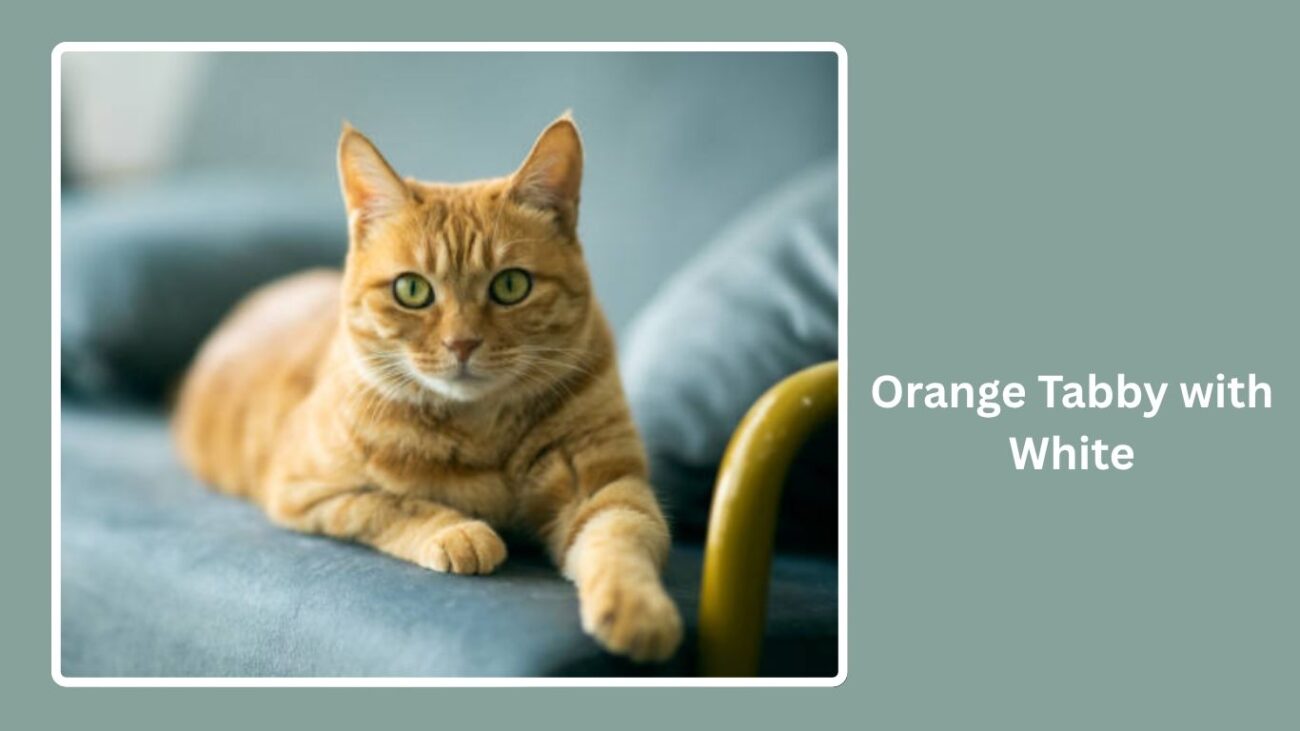
The Orange Tabby with White is a charming variation that combines the classic orange tabby pattern with striking white markings. These cats are often bicolor, featuring vibrant orange stripes along with pure white patches on the face, chest, belly, and paws. This contrast makes them look particularly friendly and photogenic.
Appearance and Color Pattern
In this pattern, the orange tabby striping appears in the typical styles—classic, mackerel, or spotted—but with sections of clean white fur interrupting the design. These white areas vary in placement and size from one cat to another.
Typical features include:
- Orange tabby markings on the back, head, and tail
- White paws, underbelly, and often a white chest or facial blaze
- Symmetrical or asymmetrical bicolor patterns
- Pink nose and paw pads, often matching their warm tones
Some may have a tuxedo-style look, while others show more of a piebald or random pattern.
Personality and Behavior
Orange Tabbies with White are known for being sociable, affectionate, and easygoing. Their bicolor pattern doesn’t affect behavior, but many owners report that these cats are among the most relaxed and loving tabbies they’ve met.
They are often:
- Playful and good with children
- Gentle and calm in indoor settings
- Loyal to their humans
- Friendly with strangers and other pets
Their affectionate nature makes them ideal lap cats, especially in family households.
Coat Texture and Size
The coat is usually soft, with a short to medium length. These cats come in a range of body types depending on breed influence, but they are generally medium-sized with round faces and expressive eyes that complement their orange-and-white contrast.
Unique Traits
What makes this tabby variation especially appealing is the unpredictable layout of orange and white—each cat has a one-of-a-kind appearance. The white patches also give a “clean” look, enhancing their bright and cheerful appearance.
7. Solid Orange Tabby (With Ghost Markings)
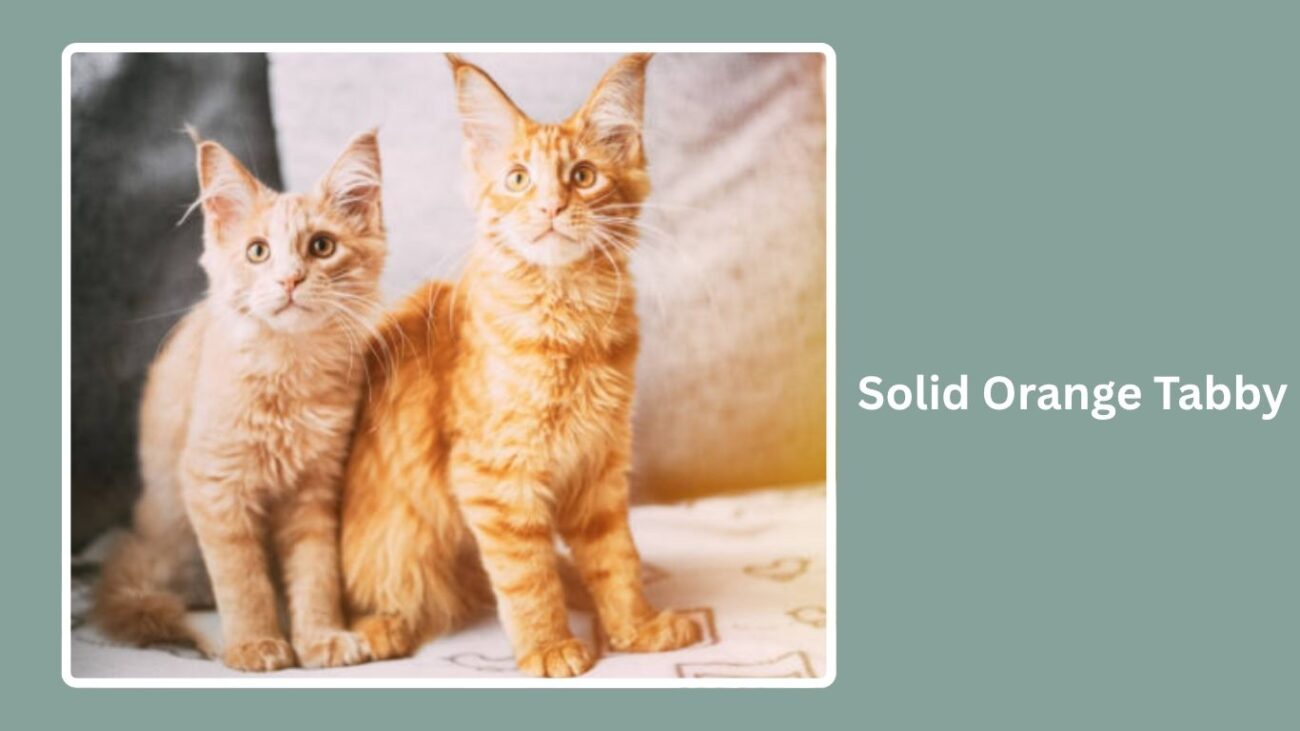
Though not truly “solid” in the strictest sense, some orange tabbies appear nearly solid in color at first glance. These Solid Orange Tabbies often have very faint or “ghost” markings that are only visible under certain lighting or when the cat is a kitten.
Appearance and Color Pattern
Solid Orange Tabbies may look uniformly orange or ginger at first glance. However, subtle tabby striping can still exist—especially when the cat is younger or viewed in sunlight. These ghost markings fade with age or may remain very light across the body.
They usually show:
- Minimal or pale tabby lines
- Uniform coat color with soft orange shading
- Slightly visible facial markings like the “M” on the forehead
- Smooth, almost monochromatic look from a distance
This effect is most common in shorthaired domestic cats or certain purebreds like British Shorthairs.
Personality and Behavior
These cats often mirror the playful and affectionate traits of their more visibly patterned tabby relatives. While their coats might seem more subdued, their personalities are usually bright and engaging.
Typical behaviors include:
- Affectionate bonding with owners
- Calm, observant nature
- Gentle playfulness
- Low aggression and high tolerance
They’re often described as “quiet companions” that adapt well to both lively homes and peaceful apartments.
Coat Texture and Size
The coat is usually sleek and low-maintenance, with a glossy appearance. These cats tend to have rounder bodies and heads, especially in breeds where the “solid tabby” look is common. Their coats may look darker or lighter depending on lighting and fur length.
Unique Traits
The ghost-marking effect is more noticeable in kittens and may fade over time, making them appear more solid as they grow. This creates a gentle and elegant look that’s particularly adored by those who prefer a subtler tabby presence.

